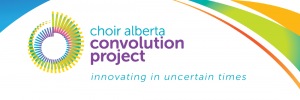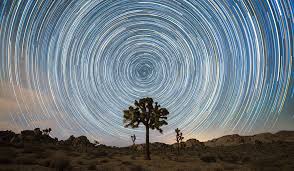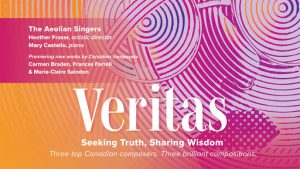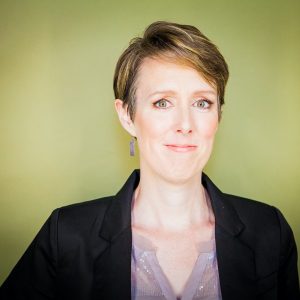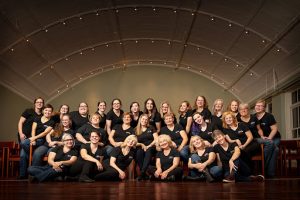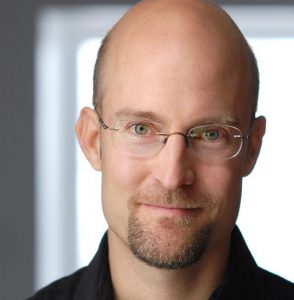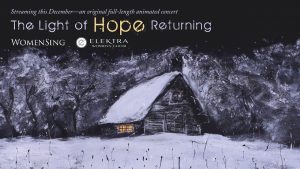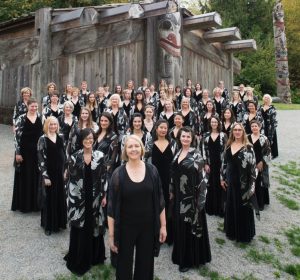Usando la pandemia para desbloquear la creatividad
Ki Adams, vicepresidente de la FIMC, presidente de la Fundación World Youth Choir, codirector fundador de The Singing Network
Es indiscutible que ahora habrá una “nueva normalidad” en el mundo coral post-pandémico. Para muchos, la tradición coral pre-Covid era familiar, cómoda y segura, pero como el tiempo lo ha venido demostrando, ha estado limitada en su visión y propósito. La pandemia nos ha proporcionado un interludio con posibilidades extraordinarias si estamos dispuestos a abrazar el cambio y encontrar nuevas formas y razones para cantar juntos. Este artículo resaltará varias innovaciones y experimentos emprendidos por coros y compositores canadienses, que en conjunto, se han involucrado en proyectos creativos e imaginativos que nunca habrían sido concebidos sin el Covid-19.
El Proyecto Convolution
Canadá, con su población de 38 millones y la segunda masa terrestre más grande del planeta (9.98 millones de kilómetros cuadrados), tiene una organización nacional de servicios artísticos dedicada al sector de las artes corales: Choral Canada/Canada Choral. Trabajando en conjunto con Choral Canada/Canada Choral hay nueve federaciones corales provinciales en las diez provincias y tres territorios del país. Choir Alberta es la federación coral de la provincia de Alberta (oeste de Canadá), que es un hervidero de actividad coral en nuestro país. Durante la pandemia, cuando los coros no pudieron reunirse o presentarse en persona, Choir Alberta quiso organizar un proyecto que fortaleciera a la comunidad coral provincial y ampliara los límites del proyecto del coro virtual convencional.
El Convolution Project surgió de la nueva realidad de la pandemia, en particular del dolor y casi pánico entre la comunidad coral sobre cómo sobreviviría. El enfoque fue explorar cómo la pandemia podría convertirse en una oportunidad en lugar de una calamidad. Al crear un nuevo medio coral digital, Reunion no solo reúne a los cantantes corales de Alberta virtualmente, sino que también devuelve virtualmente su sonido a los espacios corales donde normalmente cantan simulando las resonancias de las iglesias y salas de conciertos de toda la provincia.
Los coralistas han estado de duelo por la pérdida de su preciado arte, con todos los beneficios sociales, culturales, emocionales e incluso de salud que trae, debido al distanciamiento social impuesto por la pandemia. Esperamos utilizar Reunion para recrear virtualmente parte de la magia coral que los cantantes se han perdido. (Jason Noble, compositor)
El proyecto involucró a 89 cantantes de 54 coros de la provincia de Alberta e incluyó a cantantes audicionados y no audicionados, el panorama completo de los coros en Canadá. Todos los sonidos de la grabación provienen de la voz humana. El compositor describe el proceso de composición:
he intentado componer una pieza que a los cantantes amaran cantar, con melodías líricas, armonías exuberantes, una variedad de texturas que van desde delicadas a ricas y sonoras, y un crescendo formal dramático. Una vez que los cantantes grabaron sus partes, utilicé algunos de los materiales vocales para crear paisajes sonoros virtuales que sólo son posibles con mejoras electrónicas. De esta forma, esperamos convertir la distancia que se nos impone en una oportunidad para explorar nuevos espacios sonoros.
Utilizando la convolución, una técnica electroacústica, Noble pudo modelar la resonancia de un espacio para las voces de los coralistas, devolviendo las voces de los cantantes a sus propios espacios corales. En algunas secciones de la pieza se utilizó convolución para simular estos espacios acústicos. En otras secciones, la reverberación se disminuye o se cancela, creando una intimidad asombrosa al eliminar la ilusión de distancia. Esta técnica proporcionó un medio poderoso para evocar el texto, comenzando con la línea: La distancia desaparece en los espacios sonoros.
Además, los cantantes grabaron sonidos vocales hablados y sin texto que fueron manipulados digitalmente para crear paisajes sonoros naturales y sociales. Estos sonidos estaban destinados a evocar escenas de las que muchas personas quedaron aisladas debido a la restricción de viajes y actividades durante la pandemia: un bosque, un océano y una reunión social. No aparecen imágenes de cantantes en la actuación, sólo espacios de concierto vacíos y espacios naturales. El proyecto fue un verdadero éxito al reunir a los cantantes, social y musicalmente, en sus entornos acústicos de interpretación, a pesar de que fue una “reunión” virtual.
Proyecto Sonic Timelapse
Sonic Timelapse Project es un proyecto colaborativo de puesta en marcha de arte coral que surgió de las preocupaciones sobre cómo los coros podrían financiar las comisiones durante la pandemia. Fundado por Katerina Gimon, Laura Hawley, y Geung Kroeker-Lee con el apoyo de Prairie Voices Inc, este proyecto reúne creatividad compartida y recursos financieros en un momento de necesidad para financiar la creación de 10 nuevas obras, así como apoyar la programación en línea para coros participantes.
Kroeker-Lee explica la génesis del proyecto:
Sonic Timelapse, en esencia, se trata de comunidad. El espíritu detrás del proyecto era dar a la comunidad coral canadiense la oportunidad de responder a los efectos de la pandemia global expresándose a través de nuevas obras corales. Visualizamos un proceso creativo que colocaba al compositor, director y cantante como contribuyentes iguales de estas obras, porque sentimos que esta era una forma de crear expresiones auténticas de nuestra comunidad. La humanidad siempre ha tenido una forma de crear una belleza increíble en sus momentos más desafiantes; esperamos que este proyecto brinde una experiencia que permita a nuestra forma de arte y comunidad la oportunidad de llorar, reflexionar, hacer nuevos descubrimientos y celebrar las hermosas complejidades de la vida.
La idea es encargar nuevas obras basadas en cómo se sienten los coralistas a lo largo del tiempo durante la pandemia. El proceso de colaboración implica recopilar contenido del panorama emocional de las comunidades corales en Canadá y utilizar estas reflexiones creativas como textos para composiciones corales. Gimon describe el objetivo de la colaboración:
como compositor, siempre me ha apasionado encontrar formas de involucrar a los cantantes en el proceso de creación de una nueva obra para su coro. El resultado de involucrar a los cantantes intencionalmente es la creación de un nueva obra que realmente sienten como suya, algo representativo de su voz, sentimientos, tiempo, ideas y luchas. Durante esta pandemia, creo que esto se ha vuelto aún más importante. Los tiempos de distanciamiento social nos han hecho darnos cuenta de cuánto valoramos la conexión y anhelamos ser parte de algo más grande que nosotros mismos a través del coro y el cantar juntos. Nuestra esperanza con Sonic Timelapse es que, incluso en los momentos en que no podemos cantar juntos en una misma habitación, los participantes aún puedan sentir exactamente esta conexión y relación con los demás.
Este proyecto colaborativo está diseñado con mucha flexibilidad y opciones basadas en nueve niveles de financiamiento, cada uno con diferentes grados de acceso a la autorización de licencia digital para partituras encargadas, talleres de creatividad, reflexiones creativas y la New Works Video Library. Utilizando un modelo innovador de crowdfunding, el proyecto generará una serie de nuevas composiciones, muchas para múltiples voces en voces flexibles. Hawley explica el modelo de financiación:
Al acercarme a Sonic Timelapse desde mi perspectiva dual como compositor y director, me centré especialmente en crear una forma para que los coros accedieran a nueva música en un año en el que muchos están luchando desesperadamente, sin comprometer nuestros objetivos en torno a lo que queremos que es pagar a todos los compositores comisionados. Por esta razón, diseñamos un modelo de financiación que tiene como objetivo facilitar financieramente a los coros la compra de música nueva y su participación en línea. Por ejemplo, el nivel de financiación de 350 dólares canadienses incluye acceso a conjuntos de coros de cuatro obras nuevas, pistas de aprendizaje, videos en los que cada compositor discute su nueva pieza y tres sesiones de taller que se pueden personalizar por longitud y nivel. Todo esto está valorado en $ 800- $ 1000 CAD.
Con tantos coros buscando ayuda y con tantas personas que desean apoyar a la comunidad y las artes, creemos que podemos trabajar juntos para unir nuestros recursos financieros y creativos. ¡Cada individuo o coro que dona o se inscribe ayuda a construir una comunidad fuerte, conecta a los coros entre sí y con los compositores, da voz a nuestra experiencia vivida de la pandemia, pone música en manos de los cantantes y genera una tremenda energía creativa que es un luz positiva en nuestro mundo!
Sonic Timelapse ha contratado a diez destacados compositores canadienses para crear las obras encargadas. Para este artículo, se invitó a cada compositor a compartir sus pensamientos sobre el proyecto.
Es una gran idea tener tantas comisiones generadas en poco tiempo bajo un tema general. Ponerlos a disposición de varios coros a la vez es genial, ya que libera algunos de los límites de la exclusividad en el proceso de puesta en marcha tradicional. Después de la pandemia, imagino un compromiso de varias capas con estas piezas de toda la red de coros y compositores que participaron en la generación inicial de Sonic Timelapse. Como conjunto de obras definidas por sus circunstancias de creación, serán un marcador fascinante para recordar en los próximos años.
Sonic Timelapse entró en mi vida cinco meses después de la pandemia cuando estaba claro que las artes corales estaban en una posición vulnerable e igualmente poco claro lo que todavía era posible en términos de creación musical, comunidad y conexión. La inspiración de las reflexiones artísticas enviadas al proyecto me proporcionó una sensación de esperanza y propósito muy necesarios en ese momento. Me sentí inspirada para escribir un artículo que no solo abordara mi experiencia con la pandemia, sino que también pudiera abordar algunos de los desafíos que enfrenta la enseñanza coral y el canto en línea. Es conmovedor que, en un momento de tanta incertidumbre, los compositores corales de todo Canadá puedan estar juntos en el mismo “escenario” para ofrecer esperanza y belleza de una manera práctica y significativa.
Me encanta la idea de Sonic Timelapse como una colaboración de ideas, creadores, benefactores y beneficiarios. Como compositor, es bueno tener algunos parámetros, y la presentación de textos de múltiples fuentes e individuos proporcionó una gran variedad para elegir. Creo que es una gran idea compartir las piezas entre todos los coros implicados. Esto brinda más oportunidades para que coros y compositores tengan más interpretaciones de cada pieza.
Una de las cosas que más me emociona de Sonic Timelapse es su aspecto “timelapse” con dos piezas de música nueva que se lanzan cada mes, cada una basada en las reflexiones de los miembros de la comunidad de música coral recopiladas de forma continua. La música creada servirá como una “cápsula de tiempo” de este momento único en nuestra historia: las dificultades que enfrentamos, cómo encontramos la esperanza, cómo nos cambió y cómo cambió nuestro mundo. A través de la incertidumbre de 2020, este proyecto ha sido una luz brillante para mí, inspirándome y brindándome esperanza en tiempos difíciles.
Trabajar con las reflexiones creativas enviadas significó conectar creativamente con todos los artistas corales que habían presentado esas reflexiones. Mientras leía sus presentaciones y reflexionaba sobre cómo poner música a esas emociones e ideas, sentí que se había creado un puente entre nosotros. Ahora, mientras canto mi pieza completa, cada frase, palabra o idea emocional me conecta con la persona que inspiró ese momento. Este era un lado del proyecto que no necesariamente había predicho: el poder de este proceso creativo colaborativo para acortar la distancia entre nosotros, y cómo esto me recordaría que soy parte de una comunidad que puede encontrar el potencial creativo incluso en los momentos más oscuros y trabajar juntos para convertirlo en una expresión de arte.
En un momento en que los artistas han tenido que detener sus esfuerzos creativos, este proyecto me ha brindado la oportunidad de crear y reflexionar sobre mi experiencia con la pandemia mundial. Me atrajo Sonic Timelapse por las reflexiones creativas compartidas por directores de toda la comunidad coral canadiense. A medida que comienza mi proceso de composición, espero entretejer sus perspectivas únicas con las mías para representar las complejas emociones que surgieron durante este tiempo.
Durante la época de la pandemia y el levantamiento social, estaba reevaluando mi relación con la música coral como persona de ascendencia del sur de Asia. Trabajar en una forma de arte específica de la cultura que colonizó a mi gente es un obstáculo que estoy superando varias veces. Sonic Timelapse me permitió canalizar algunos de mis pensamientos y sentimientos sobre estos temas en una pieza que podría tener más exposición. Las ideas de inclusión y diversidad y el apoyo a la comunidad coral durante esta pandemia parecen tan relevantes que aproveché la oportunidad de ser parte de este grupo de compositores canadienses.
¡Qué proyecto! Cuando todo el mundo todavía se estaba recuperando de las cancelaciones de miles de conciertos y ensayos en la primavera, Sonic Timelapse ofreció una nueva forma de crear música al reunir a coralistas, directores y compositores a pesar del distanciamiento físico. ¡Por supuesto que iba a sumarme! También es un desafío maravilloso componer algo “más simple” para mantenerlo accesible durante los ensayos por Zoom, pero que todavía sea artísticamente atractivo. ¡Espero que este modelo que hace que la puesta en servicio sea accesible a un costo menor para los conjuntos comunitarios prospere en la comunidad coral internacional!
Hace frío, está oscuro y no podemos ver a nuestros amigos. La muerte y el dolor se experimentan en escenarios extraños y distantes. El espíritu canadiense avanza con dificultad. El deshielo es más prometedor que nunca esta vez. Sonic Timelapse trata sobre este espíritu de resiliencia y creatividad canadiense en respuesta a las dificultades. Uno de los trabajos de la música es capturar momentos como este: una foto instantánea viviente de un tiempo y lugar. Mi esperanza es que la imagen sea trascendente, en medio de la oscuridad, el dolor y la nieve.
Sonic Timelapse es una forma realmente innovadora de traer esperanza a la comunidad coral: cantantes, directores, audiencia y compositores. Aborda el compromiso de la comunidad, la creación de nueva música, la colaboración financiera y la resiliencia emocional en un momento en el que nos vemos obligados a guardar silencio. Como directora, coralista, educadora musical y compositora, siento que este proyecto llena múltiples vacíos en la creación musical colaborativa en este momento y continuará siendo necesario después de la pandemia. Sonic Timelapse nos recuerda que debemos apoyarnos en la música y entre nosotros para tener resiliencia y esperanza.
Veritas: Seeking Truth, Sharing Wisdom
Explorando el concepto de la verdad durante una pandemia global saturada de noticias falsas, engaño y desinformación, Aeolian Singers (Halifax, Nueva Escocia) encargó obras a compositoras canadienses bajo el título de Veritas: Seeking Truth, Sharing Wisdom. Los tres compositores son Frances Farrell (Nueva Escocia), Marie-Claire Saindon (Quebec) y Carmen Braden (Territorio del Noroeste), cada uno de una región diferente de Canadá. La directora artística Heather Fraser describe la inspiración para este proyecto:
Todos buscamos la verdad en nuestras vidas, y parece que cada vez es más difícil encontrarla. Este proyecto representa cuán ampliamente la verdad está abierta a la interpretación y cómo nuestras certezas pueden ser tan diferentes unas de otras. Luchamos continuamente con el complejo mundo de la luz y la sombra, lo visible y lo invisible, y la manipulación de la realidad.
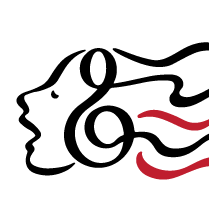 A través de sus encargos, los compositores han explorado el tema de la verdad y le han permitido conducirlos por caminos creativos tremendamente diferentes. Farrell se inspira en la rosa como símbolo de la verdad, algo que se puede quitar pétalo a pétalo y luego florecer en los lugares más inesperados. Saindon examina la verdad en la era de las noticias falsas, los anti-vacunas, las teorías de la conspiración y la tecnología deepfake. Braden desafía a los oyentes a experimentar la verdad a través de los ojos de un niño con recuerdos e impresiones en constante evolución.
A través de sus encargos, los compositores han explorado el tema de la verdad y le han permitido conducirlos por caminos creativos tremendamente diferentes. Farrell se inspira en la rosa como símbolo de la verdad, algo que se puede quitar pétalo a pétalo y luego florecer en los lugares más inesperados. Saindon examina la verdad en la era de las noticias falsas, los anti-vacunas, las teorías de la conspiración y la tecnología deepfake. Braden desafía a los oyentes a experimentar la verdad a través de los ojos de un niño con recuerdos e impresiones en constante evolución.
En lugar de estrenar las comisiones en un concierto, el proyecto presenta a los compositores individualmente en tres conciertos separados diseñados para permitir que la audiencia interactúe con estas destacadas compositoras canadienses. Cada concierto presenta el estreno mundial de un encargo e incorpora una presentación de la compositora sobre un tema relacionado con su propio proceso compositivo y creativo. La compositora participa en una demostración colaborativa con el coro sobre el trabajo encargado, brindando a los miembros de la audiencia la rara oportunidad de escuchar directamente a los creadores sobre su oficio, presenciar el proceso creativo colaborativo y experimentar una mirada en profundidad al mundo de la composición.
Una de las compositoras, Frances Farrell, comparte sus pensamientos sobre su proceso creativo y el componente del proyecto Veritas que involucra al compositor, al coro y al público.
El primer desafío al realizar este encargo, A Rose by Any Other Name, fue abordar un tema tan amplio. Decidí crear un conjunto de tres piezas para reflejar la verdad desde varios puntos de vista. Una exploración preliminar de la poesía me llevó a la cita de Anne Brontë: “Pero quien no se atreva a agarrar la espina nunca debería desear la rosa”. Jugué con la rosa como símbolo de la verdad que podía unificar los tres movimientos de A Rose by Any Other Name. Cuando leí la última estrofa del poema Night de Hilda Doolittle (H.D.), me intrigó la imagen de los pétalos que caían, dejando atrás solo el núcleo duro de la rosa. Mientras leía el texto, se me ocurrió la idea de un aria de Handel. La verdad en estos días, parece, es una construcción bastante arcaica, y se me ocurrió emparejar esta noción con un estilo musical arcaico, pero muy querido, el barroco, lo que resultó en una lenta y majestuosa despedida de la verdad como el título de este primer movimiento llamado Elegía, sugiere. La segunda pieza de este conjunto se inspiró en una imagen que encontré en un poema de Tupac Shakur sobre una rosa que crece en el hormigón. La imposibilidad de esta imagen me intrigó y, mientras pensaba más en ella, la noción de estar en la verdad de uno, de creer en uno mismo cuando quizás nadie más lo hace, eventualmente conformó el material musical de este movimiento. Las ideas musicales en el último movimiento de esta suite, Women Are Not Roses, se inspiraron en un poema del mismo nombre. En su poema, la célebre autora Ana Castillo desafía las formas en las que las mujeres han sido descritas y categorizadas estereotipadamente, aparentemente pasando por alto la verdad de quiénes somos en realidad. Musicalmente, quería reflejar la noción de retener la definición tocando con la música para que no se quedara en un solo lugar, por así decirlo, lo que resultaba en el cambio de tempo, melodías poco ortodoxas y tocar con claves temporales creando cambios abruptos en las ideas musicales. Este movimiento es realmente una especie de objetivo en movimiento.
Parece que durante estos tiempos el arte coral también es un objetivo en movimiento. Todos hemos tenido el desafío de explorar y ampliar los parámetros de lo que el arte coral puede ofrecer. El proyecto Veritas apunta a la innovación en estos tiempos de incertidumbre. El hecho de que este proyecto se haya realizado, dadas las restricciones de Covid, habla de la determinación de la directora artística Heather Fraser y los Aeolian Singers. Pero, más allá del Covid, el proyecto Veritas subraya el papel que puede desempeñar un compositor vivo en el avance de la música coral.
Los segmentos detrás de escena se han convertido aparentemente en un elemento básico en muchas otras formas artísticas, como se evidencia en entrevistas con actores y directores de películas, autores y sus libros, y círculos de compositores. Estos eventos dan voz a los creadores además de las propias creaciones. En el mundo coral, y me doy cuenta de que hablo en términos generales, la voz del compositor tiende a quedar relegada a notas de programa o breves comentarios del director. Esto es inevitable con compositores que ya no están vivos. Además, se podría argumentar que la interpretación de la obra de un compositor es, en sí misma, la que da voz al compositor. Pero, ¿cómo se podría mejorar la experiencia de los artistas intérpretes o ejecutantes y la audiencia cuando se les brindan más oportunidades de escuchar al propio compositor? ¿Cuándo se invita a los compositores a trabajar con los cantantes y el director para compartir su visión de la pieza? ¿Cuándo se invita a los compositores a hablar sobre la génesis de sus piezas y las características compositivas destacadas a la audiencia? El proyecto Veritas puede servir como modelo de un concierto coral que ve una revisión y fortalecimiento de la alianza entre los artistas intérpretes o ejecutantes, los miembros de la audiencia y el compositor y, al hacerlo, puede proporcionar nuevas respuestas a preocupaciones seculares de mantener y hacer crecer una audiencia base. Además, invitar a la voz del compositor cambia el equilibrio entre el proceso y el producto, afirma y eleva la voz del compositor y, al mismo tiempo, ofrece más oportunidades para empoderar y elevar las voces de los coralistas y directores en su papel compartido como agentes de arte. La verdad del asunto es que proyectos como Veritas pueden estar señalando el camino a través de estos tiempos difíciles y más allá en el mundo coral
La luz de la esperanza regresa
En junio de 2020, cuando se acercaba la realidad de una temporada coral entera perdida por la pandemia, Morna Edmundson, directora artística del Elektra Women’s Choir (Vancouver, Columbia Británica, Canadá), fue contactada por Ofer dal Lal, director artístico de WomenSing (Orinda, California, EE. UU.), sobre la posibilidad de una colaboración internacional entre los dos coros en una interpretación de The Light of Hope Returning de Shawn Kirchner. Edmundson afirma:
Debido a que el mandato de Elektra incluye crear conciencia sobre un buen repertorio para coros de voces blancas y debido a que las obras extendidas son tan raras en el repertorio de nuestras voces, aproveché la oportunidad de conocer The Light of Hope Returning y promocionarla. Debido a la prohibición de viajar entre Canadá y EE. UU., sabíamos desde el principio que la actuación tendría que registrarse por separado. Al principio de la planificación, decidimos que este proyecto de coro virtual debería tener animación y aprendimos de Kirchner sobre el trabajo del artista visual sirio-estadounidense Kevork Mourad con músicos clásicos, incluidos LA Master Chorale y Yo-Yo Ma. Ha sido fascinante unir nuestras dos formas de arte.
The Light of Hope Returning es una “ceremonia” de villancicos folclóricos con duración similar a la de un concierto en la que varios de los escenarios navideños más queridos de Kirchner se combinan con villancicos recién escritos sobre temas de navidad, solsticio de invierno y año nuevo. Juntos, estos villancicos forman un arco dramático que lleva al oyente en un viaje desde la esperanza lejana a través de la oscuridad hacia el renacimiento de la luz y la verdadera esperanza para el futuro. También se presentan la solista canadiense Allison Girvan e instrumentistas de la San Francisco Opera Orchestra, así como textos de la autora Susan Cooper.
Los aspectos temáticos de esta obra, aunque atemporales, se sienten muy apropiados para las condiciones restringidas actuales que todos estamos experimentando durante la pandemia. Amenazando la vida de muchos y separándonos del calor de los demás, la Covid-19 ha puesto al mundo en un estado de “invierno”. Concebida como un antídoto contra la desesperanza en tiempos difíciles, esta colaboración multimedia internacional refleja de manera conmovedora el estado actual de incertidumbre global, al mismo tiempo que confía en el ciclo de las estaciones y la esperanza encarnada por el eventual regreso de la luz. ¡Volveremos a cantar juntos!
De cara al futuro…
Con demasiada frecuencia, las organizaciones están tratando de encontrar formas de diferenciarse de otras organizaciones… Ya sean coros, festivales u organizaciones nacionales de servicios artísticos. Nos vemos como competidores más que como colaboradores. La pandemia ha demostrado que realmente nos necesitamos unos a otros para ayudarnos y apoyarnos para salir al otro lado con el arte coral prosperando y sobreviviendo. La comunidad no se trata solo de cantantes que no pueden reunirse para cantar juntos. Es igualmente importante que todos los niveles de la forma de arte coral se conecten y colaboren.
Nunca podríamos haber imaginado que el catalizador para desbloquear la creatividad ejemplificada por estos cuatro proyectos sería una pandemia que reorganizó los fundamentos de nuestras formas de vida. Nunca volveremos a ser lo que éramos antes. Juntos, estamos reinventando cómo se comunica la comunidad coral y cómo colabora. No hay duda de que estamos todos juntos en un nuevo viaje.
No seguiré por donde me lleve el camino, sino que iré donde no hay camino y dejaré un rastro. (Muriel Strode, 1903)
El reto para todos nosotros es buscar formas de dejar un rastro en lugar de seguir un camino.
Traducido del inglés al español por Vania Romero, Venezuela
